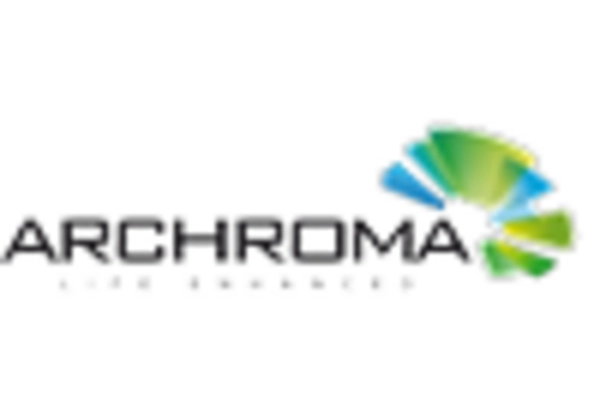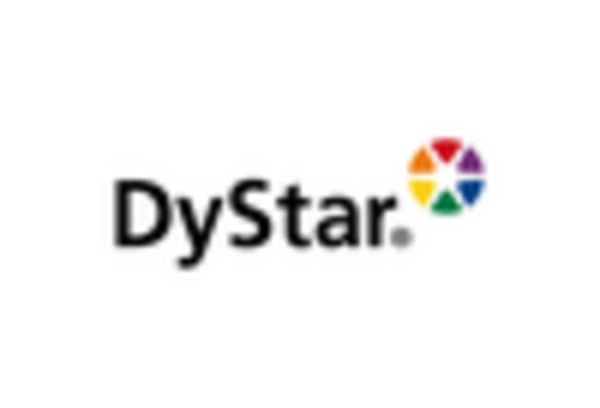China : Unmatched Growth and Demand Trends
China holds a commanding market share of 43.5% in the textile dyes sector, valued at $1200.0 million. Key growth drivers include rapid industrialization, a robust textile manufacturing base, and increasing demand for sustainable dyeing processes. Government initiatives promoting eco-friendly practices and stringent regulations on chemical usage further enhance market dynamics. Infrastructure development, particularly in cities like Shanghai and Guangzhou, supports the expansion of dye production facilities.
India : Sustainable Practices Drive Growth
India accounts for 26.1% of the APAC textile dyes market, valued at $600.0 million. The growth is fueled by a burgeoning textile industry, increasing exports, and a shift towards sustainable dyeing methods. Government policies promoting Make in India and investments in green technologies are pivotal. The demand for natural dyes is rising, reflecting changing consumer preferences and regulatory support for eco-friendly practices.
Japan : High-Quality Standards and Technology
Japan holds a 15.2% market share in the textile dyes sector, valued at $350.0 million. The market is driven by high-quality standards, technological advancements, and a focus on sustainable practices. Regulatory frameworks encourage innovation in dye formulations, particularly in urban centers like Tokyo and Osaka. The demand for specialty dyes in fashion and automotive sectors is on the rise, reflecting Japan's unique market dynamics.
South Korea : Focus on Innovation and Sustainability
South Korea represents 10.9% of the textile dyes market, valued at $250.0 million. The growth is propelled by technological advancements and a strong emphasis on sustainability. Government initiatives support research and development in eco-friendly dyeing processes. Key cities like Seoul and Busan are central to the textile industry, fostering a competitive landscape with major players investing in innovative solutions.
Malaysia : Sustainable Practices Gain Traction
Malaysia captures 6.5% of the textile dyes market, valued at $150.0 million. The market is driven by increasing demand for eco-friendly dyes and government support for sustainable practices. The textile industry is expanding, particularly in states like Johor and Penang, where infrastructure development is enhancing production capabilities. Local players are focusing on innovation to meet international standards.
Thailand : Emerging Market with Potential
Thailand holds a 4.3% market share in the textile dyes sector, valued at $100.0 million. The growth is supported by a vibrant textile industry and increasing exports. Government initiatives promoting sustainable practices and investment in infrastructure are key drivers. Key markets include Bangkok and Chiang Mai, where local manufacturers are adapting to global trends and consumer preferences.
Indonesia : Potential for Market Expansion
Indonesia accounts for 2.2% of the textile dyes market, valued at $50.0 million. The market is in a developing stage, with growth driven by increasing domestic consumption and export opportunities. Government policies aimed at boosting the textile sector are crucial. Key cities like Jakarta and Bandung are emerging as centers for textile production, attracting investments from major players.
Rest of APAC : Varied Markets with Unique Needs
The Rest of APAC region holds a 17.4% market share, valued at $416.0 million. This diverse market is characterized by varying demand trends and consumption patterns across countries. Growth is driven by local industries adapting to global sustainability trends and regulatory frameworks. Countries like Vietnam and the Philippines are emerging markets, with increasing investments in textile production and dyeing technologies.

















Leave a Comment